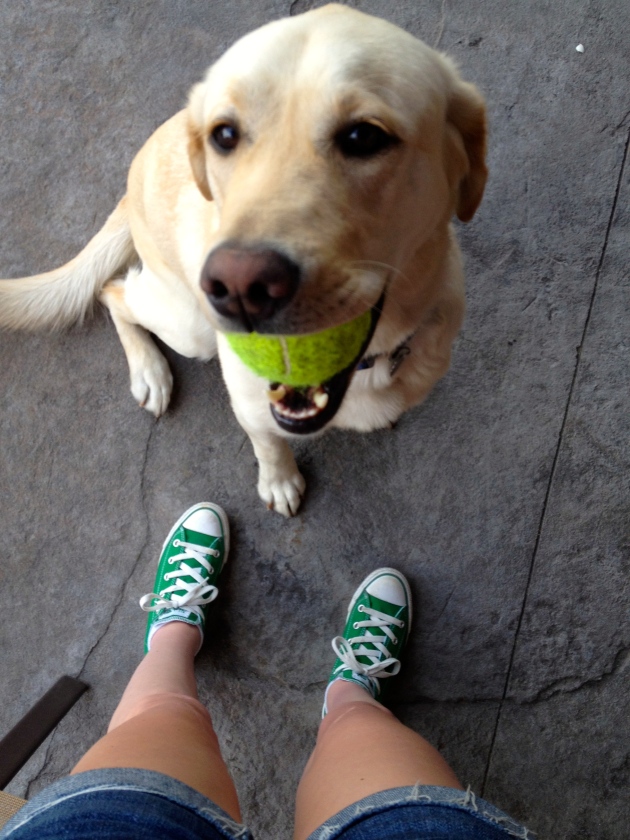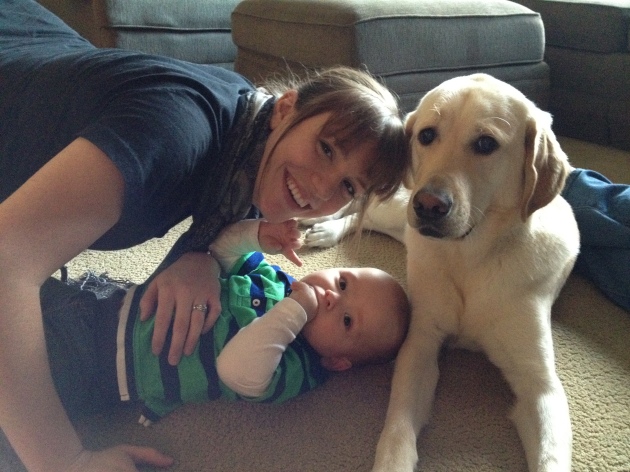How many of us treat our pups as family members?
*Raises hand sheepishly.*
Thanksgiving is a holiday of grazing. We eat, and eat, and eat. Turkey, stuffing, pies, mashed potatoes and gravy, squash, casseroles (or as we Midwesterners say, “hot dish”), cookies, roasted veggies, the list goes on and on and on…and on. Then we take a turkey-induced nap, then we eat again.
When our furry relatives look up at us with those big, beautiful, pleading eyes, our hearts melt, and we hand over our leftovers.
But beware: some foods that humans can consume without a problem are toxic to dogs and can turn your holiday upside down. Erin Callaghan, a dog trainer and consultant in the Bay Area, sent me a really great list of things to be sure Bright doesn’t get ahold of this Thanksgiving:
Chocolate – Erin explains that the more theobromine in the chocolate, the worse it is – dark chocolate and cooking chocolate have high amounts of theobromine.
Onions, grapes, and raisins – These can be hidden in many different dishes, including stuffing, casseroles, and salads.
Yeast – Watch out for curious noses while you’re baking.
Coffee, coffee grounds, and other caffeinated beverages – Caffeine, a relative of theobromine, is poisonous and can cause death in small dogs.
Alcohol – Yes, I know you have a story about when you lived in a frat house and the frat dog drank beer all the time and he was fine. Don’t take the chance, though. If you’re giving your dog alcohol, it’s probably for your own entertainment, and you’d feel awful if he had a bad reaction.
Xylitol – Used as a sugar substitute and found in many sugarless candies and gum.
Hops – Brewing beer at home is getting to be more and more popular; just be sure to keep your supplies out of the reach of your dog.
Marijuana – Stuffing your bird with something special? Don’t feed it to the dog. It’s poison. And don’t comment here if you did. The DEA will find you.
That’s not a comprehensive list by a long shot, but hopefully it hits most of the things your dog is likely to encounter on the feast-iest day of the year. And remember, you don’t have to offer it for your furry ninja to get his paws on it – “I swear, all I did was blink. He ate an entire hot dish while I blinked.” Pay attention so that your holiday isn’t interrupted by a trip to the emergency vet.
On that note, be sure to have the phone number for the emergency vet on hand at all times – in the event of any ingestion of poison, your dog’s life depends on your speedy response.
In any case, if you want to include your pup in the holiday and make it a special day for him, Erin suggests extra playtime or a new toy instead of taking a gamble on new foods. When he’s not having his stomach pumped, the cutest member of your family will thank you, and Thanksgiving will stay happy.

